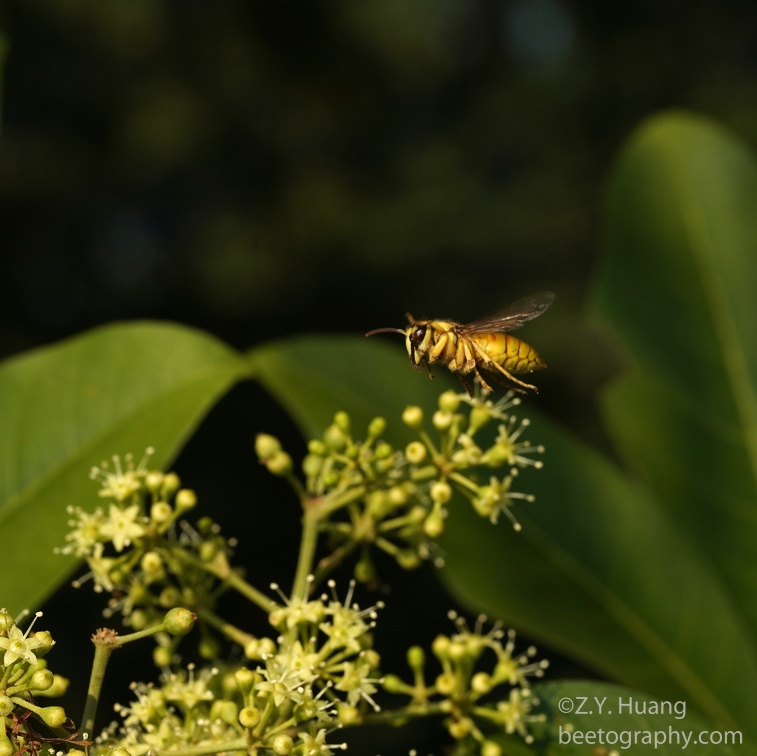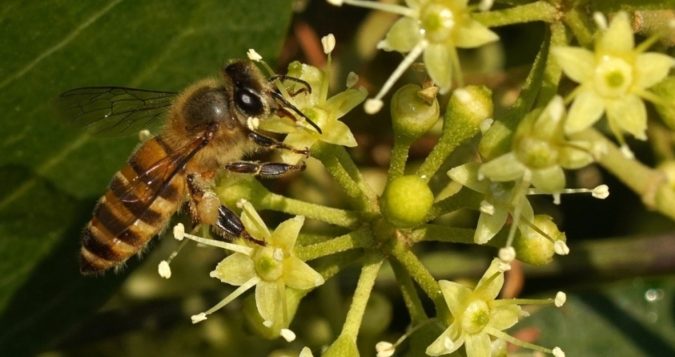| Family: | Araliaceae |
| Genus: | Schefflera |
| Species: | S. heptaphylla |
| Common names: | Ivy tree, 鸭脚木 |
| ZBAS | 9 |
This plant is in the same family as ginseng or English ivy. It grows only in the coastal provinces in China, i.e. Fujian, Guangdong, Guangxi, Taiwan and Yunan (Yunan is not coastal but has areas that are really warm, similar to Thailand). In the hills it grows up to 3-4 meters high but I found some planted ones in the city of Guangzhou that are just knee high and found one also producing seeds at that height. I know this is a very important honey plant in southern China, during the winter time, so I tried to shoot some bees on it. But it was a long ordeal.
On Nov. 11, 2023, I visited the South China Botanical Garden in Guangzhou and saw a few trees that were the perfect height because they grew under a bridge and were about 3 meters high, so the flowers were easy to photograph. But it was a bit too early because most flowers were not opened yet, but many wasps (Vespa bicolor, in China it is called “black shield hornet” because the wasp is yellow but there is shield like mark that is black on the ventral side of thorax) were already flying around (reconnaissance?) perhaps waiting honey bees to show up and prey upon them.
On Nov. 18, I was pleasantly surprised to find the same plant (but leaves were more shiny and thicker) cultivated at the Zoology Institute of Guangdong Academy of Sciences. A few Asian honey bees (Apis cerana) were foraging on this plant and I even used my phone to record a video of a wasp also “foraging” on the plant. But it appeared to be young fruits and it had so much nectar I could tough them with my finger and able to taste the nectar. I asked around and was told this plant would produce more nectar after petal fall, perhaps a strategy to attract ants to protect the fruits (but definitely a nice system to see if this is true). In catalpa this is shown to be true, with leaves producing more nectar from the extrafloral nectaries. So I still wanted to obtain photos of bees foraging on the actual flowers. (Fig. 1 and 2).
Nov 22, I traveled to Huidong County, about a 3 hour drive from Guangzhou and visited one apiary and gave a talk to beekeepers. Before lunch we hunted for this plant and found a few, but all about 4-5 meters high and my 90 mm macro just could not reach the bees.
Finally, on Nov 28, I went back to the same botanical garden again, after knowing a colleague works there. He promised me I would be able to obtains some bees on this flower. But we spent 2 hours and found a few trees, again all too tall. We bent one small tree, tied it to another so the flowers are about head-high, but no bees came that that tree after 30 min waiting. I then decided to visit the same trees near the bridge. It was good I took a photo with my cell phone, so it recorded its location also.
We went there and it was buzzing with….wasps. There were about 15 V. bicolor (Fig. 5) cruising around and we saw one or two Apis cerana foraging. But they were so alert, anytime you point the camera they are gone because they were trying to avoid the wasps. I suggested we catch some wasps to see if bee visits would increase. We were lucky Dr. Huayan Chen carries a portable net since he is a taxonomist, so we started catching and killing wasps. After about 6-8 wasps were removed, about 6 bees came back! We were so happy we probably ended up shooting for 40 min (Fig. 3 and 4). But I forgot to shoot a video. Well, next year.
- A. cerana foraging on young fruits of ivy tree.
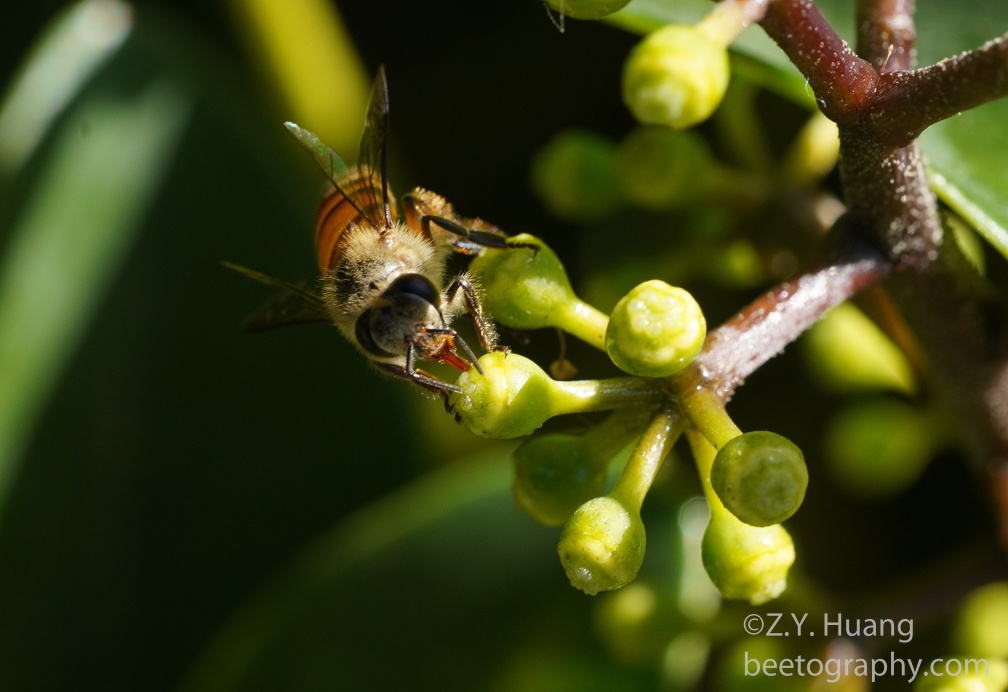
2. Another bee foraging on young fruits.
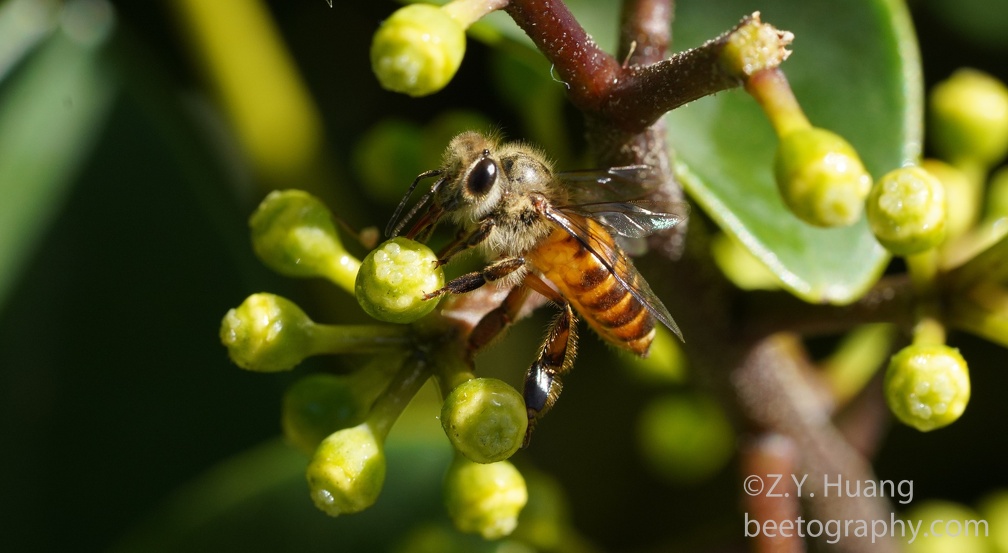
3. Now with flowers in full bloom and hornets removed, Asian honey bees started coming back and foraging on ivy tree, Schefflera heptaphylla.
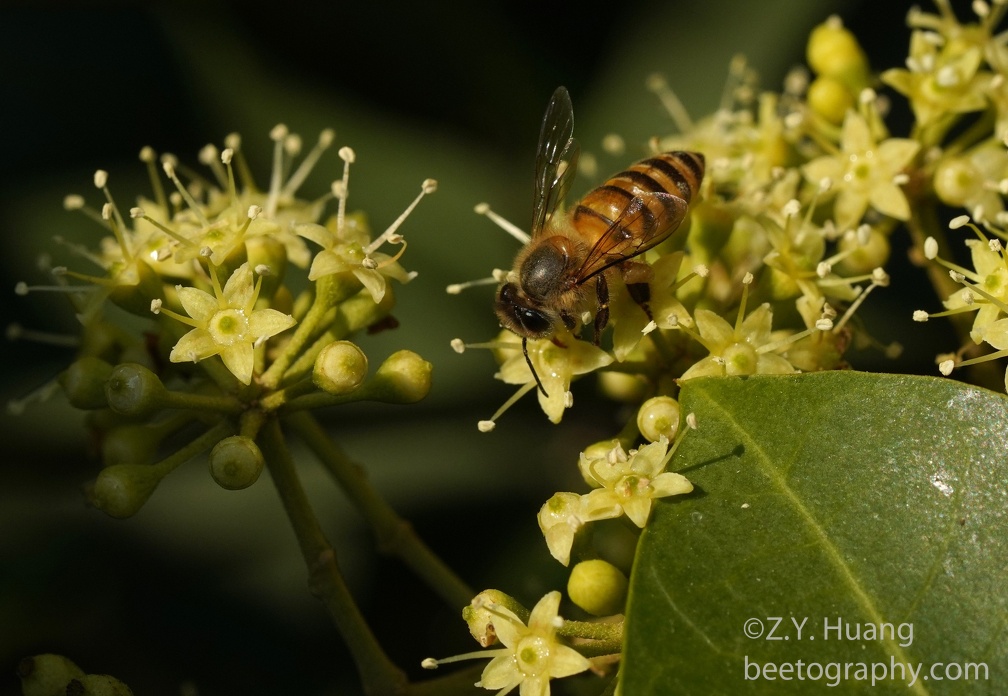
4. Another bee foraging on ivy tree. Flowers are typical of these in Araliaceae.
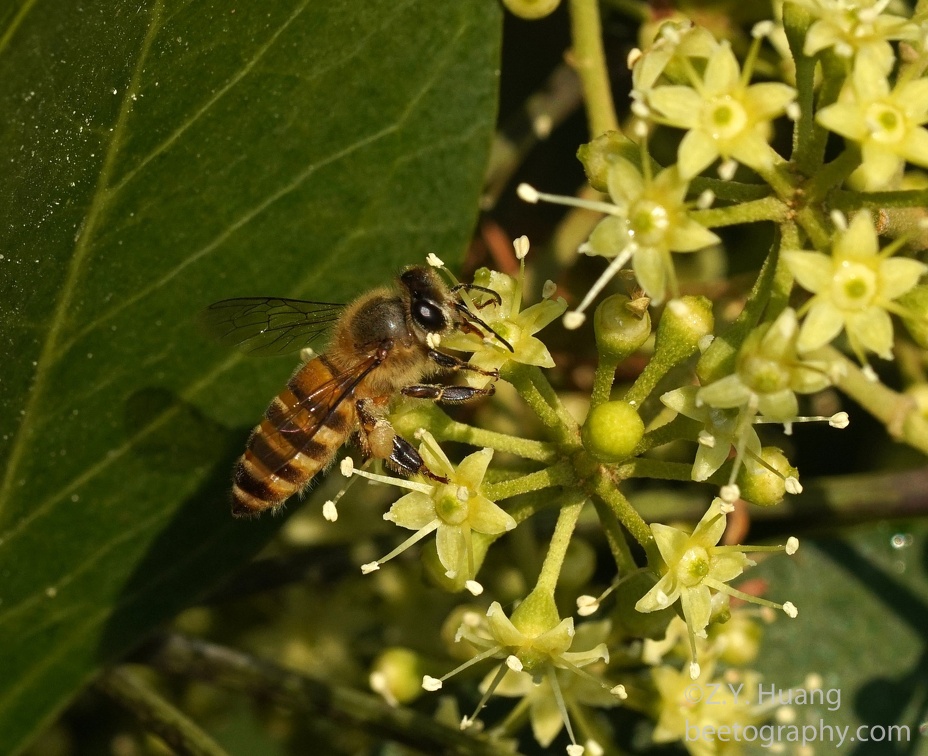
5. A black shield hornet, Vespa bicolor, hovering on ivy tree flowers to prey upon A. cerana.
